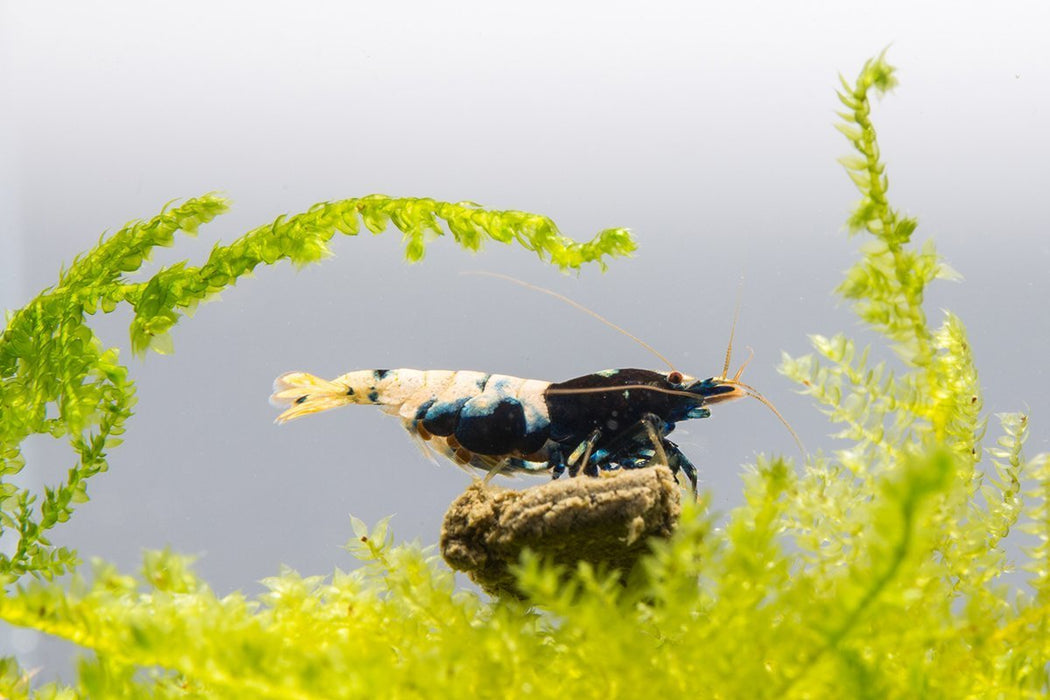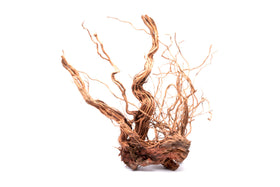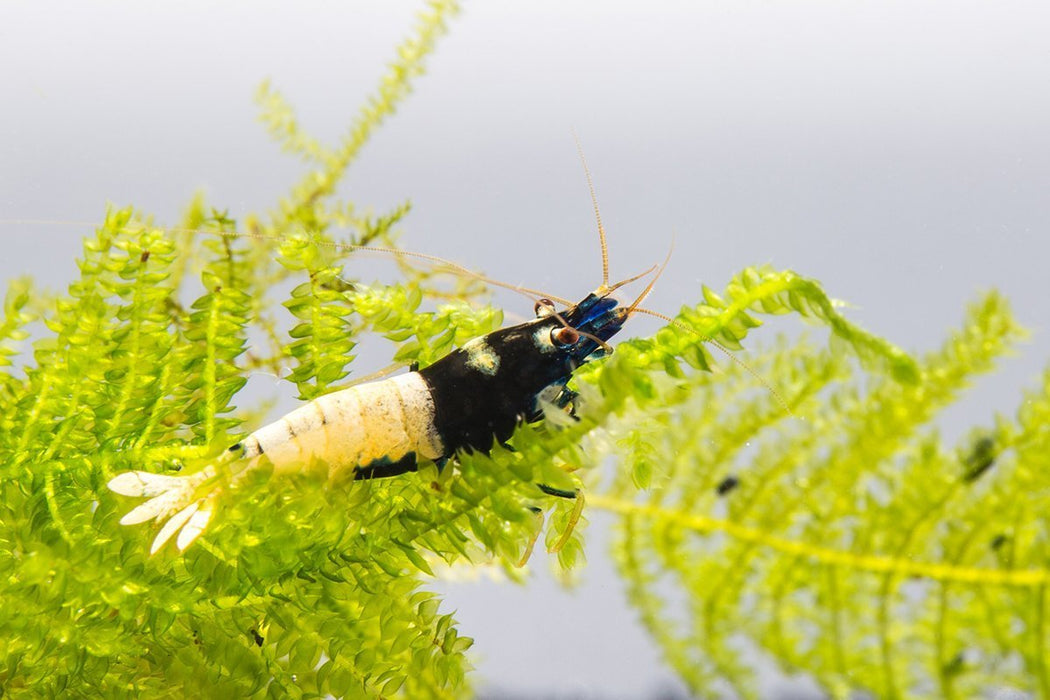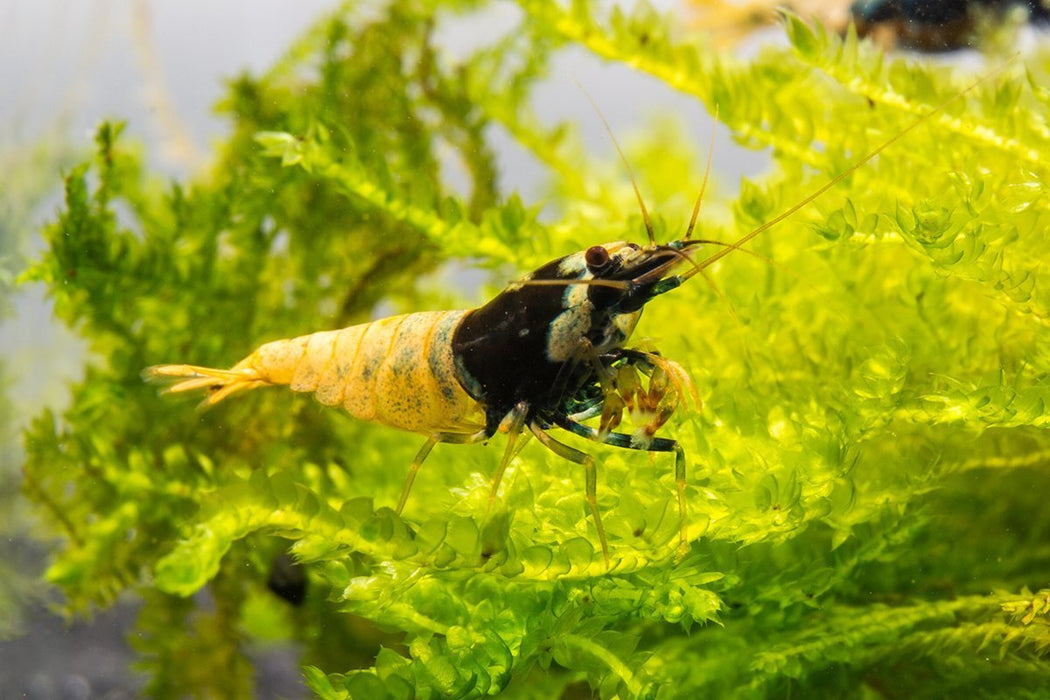
Black Pinto Shrimp
Common Name: Black Pinto Shrimp
Scientific Name: Caridina Cantonensis "Pinto"
Genus: Caridina
Wild Origin: Japan
Adult Size: 1.in
**Note: All livestock orders will come carefully packaged with solid wall Styrofoam insulation and shipped via 1-day shipping only. No extra insulation needs to be added to your cart for your livestock.
Pinto Shrimp are a type of Taitibee, which is a “mischling” or crossbreed. Tibee shrimp were created by crossing either a Tiger Shrimp with a Taiwan Bee Shrimp, or a Tiger Shrimp and a Crystal Red or Black Shrimp. Taitibee and Pinto Shrimp are the result of crossing a Tibee Shrimp back to a Taiwan Bee. Pinto Shrimp display three different color variations: zebra, spotted head, and “fancy”—cloud or skunk pattern. These shrimp can exhibit these patterns in black and white or red and white.
As with most shrimp varieties inbred for desirable characteristics, Pinto Shrimp are very sensitive to water conditions. It is recommended to use a larger tank for these shrimp, at least 25 gallons. This is to make it easier to maintain consistent water parameters. There is conflicting information on the best water parameters for these shrimp. They may prefer warmer conditions and neutral pH, although there is evidence that low temperature and pH helps protect the shrimp from disease, even though its not their preferred environment.
Check out our guide on the different substrates that can help achieve ideal water parameters for these shrimp: Best Substrate for Shrimp.
Key Features & Important Notes
- Tank-raised specimen
- Bright, bold color and pattern
- Shrimp are excellent scavengers and will happily feed on biofilm, decaying plant matter, and algae
- To increase survival rates, please allow 2-3 business days after placing an order to properly prepare live animal shipments
Recommended Water Parameters
Listed information should be treated as general guidelines only. We encourage you to do thorough research before committing to keeping any livestock.
- Temperature Range: 68-76°F
- pH: 6.0-6.5
- TDS: 100-150 ppm
- GH: 3-5
- dGH KH: 0-2 dKH
Recommended Tank Size
5+ gallons. Tank size is relative and various factors should be considered when determining tank size. Factors include maintenance schedules, tank mates, desired colony size and more.
Diet
Algae, biofilm, diatoms, decaying plant matter, spirulina powder, bee pollen, plant-based shrimp pellets/wafers, blanched vegetables
Breeding
Sexing Pinto Shrimp can be somewhat difficult until the shrimp begin to mature. Female shrimp have slightly larger tails and display a “saddle” formation on the upper body, behind the head, where eggs are stored before fertilization. The saddle can be nearly impossible to identify on this shrimp due to its dark coloration. When female shrimp are “berried”, or have eggs ready for fertilization, the saddle shape will appear more prominent. Once the shrimp are fully-grown the males will be smaller than the females.
Pinto Shrimp are eager breeders given comfortable water parameters and a sufficient food source. Once the shrimp reach maturity, and if there are males and females present, they should breed naturally and frequently. It is recommended to purchase 8-10 shrimp to ensure that there are enough male-female pairs for successful breeding. When female shrimp have eggs available for fertilization, they will molt and release pheromones that the male shrimp respond to with frenzy.
Once the shrimp breed, the eggs will gestate for about 2 weeks. The shrimp fry will feed from the same food sources as their parents, and will molt frequently during their early life stages. Leave molted shells in the tank, as the shrimp fry will consume them for extra minerals like calcium that will help their growth.
Keep in mind that if you are keeping shrimp with other species of fish, or possibly aggressive shrimp species, this may affect reproduction. If the shrimp feel threatened or don’t have places in your tank to hide they may not breed. Breeding Pinto Shrimp will depend on the line it came from, and what type of shrimp you will breed them to. You’ll want to get some information from the source of your Pinto Shrimp on their particular genetic history. Check out our blog article to learn how to breed freshwater shrimp.






